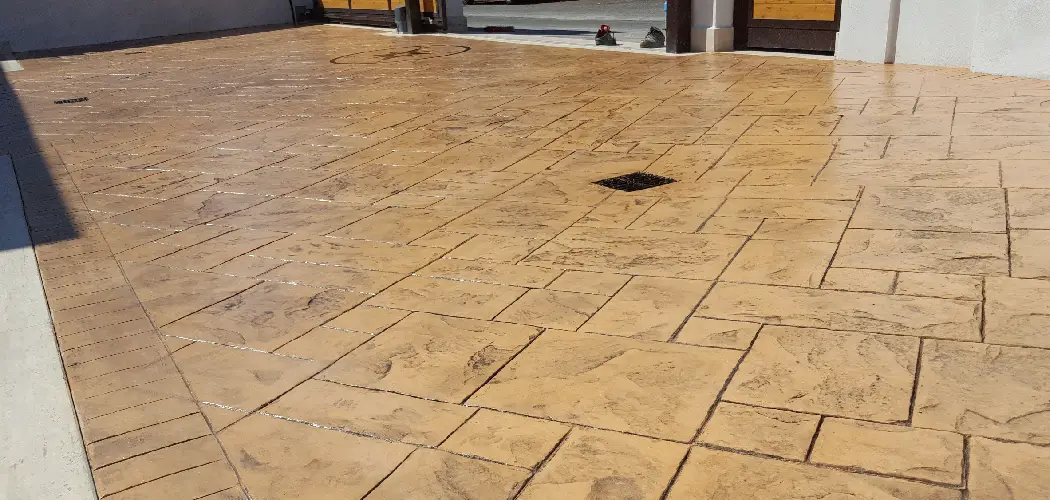Stamped concrete is a popular choice for outdoor spaces such as patios, driveways, and pool decks due to its aesthetic appeal and durability. However, one of the major concerns with stamped concrete is that it can become slippery when wet, posing a safety hazard. This can be especially dangerous in areas with high foot traffic or near pools where children are prone to running around.
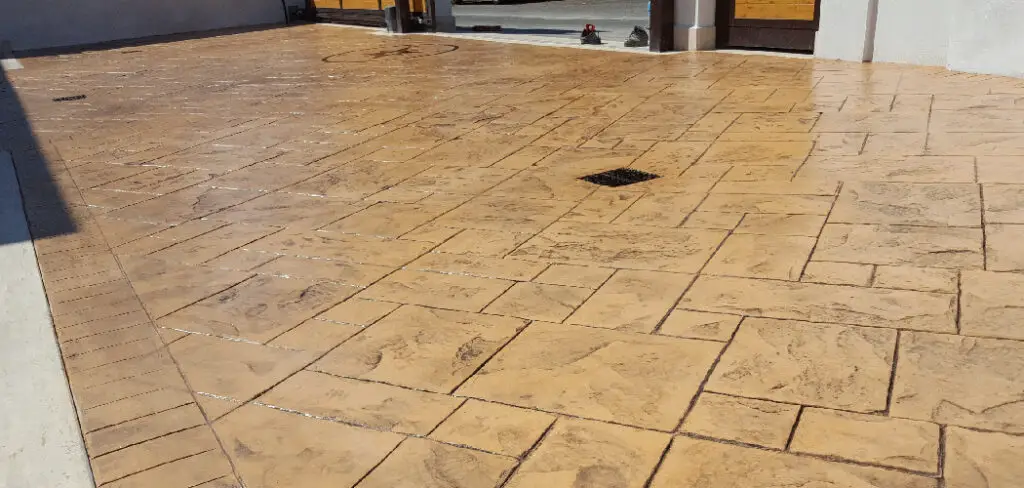
The main advantage of stamped concrete is the ability to mimic almost any other type of paving material, such as brick, stone, or even wood. This allows for a wide range of design options and versatility in creating unique and aesthetically pleasing outdoor spaces. In this blog post, You will learn in detail how to make stamped concrete not slippery.
Step-by-step Instructions for How to Make Stamped Concrete Not Slippery
Step 1: Inspect and Clean
Inspect the surface of your stamped concrete area. Look for any visible signs of algae, mold, or mildew growth. These can cause slippery conditions on the surface. If you spot any growth, clean it immediately before proceeding to the next step.
Step 2: Prepare a Cleaning Solution
Mix one part bleach with four parts water in a bucket. This solution will help kill any remaining algae, mold, or mildew and remove any dirt or grime from the surface. Using a stiff-bristled broom, scrub the stamped concrete surface in a circular motion. This will help loosen any debris that may be stuck on the surface.
Step 3: Rinse with Clean Water
After scrubbing, rinse the surface thoroughly with clean water. This will remove any remaining dirt or grime. Let the stamped concrete surface dry completely before proceeding to the next step.
Step 4: Apply Anti-Slip Solution
Once the surface is dry, apply an anti-slip solution designed specifically for use on stamped concrete. These solutions contain special additives that increase the friction and prevent slippery conditions. Using a clean broom, spread the anti-slip solution evenly across the entire surface. Make sure to cover all areas thoroughly.
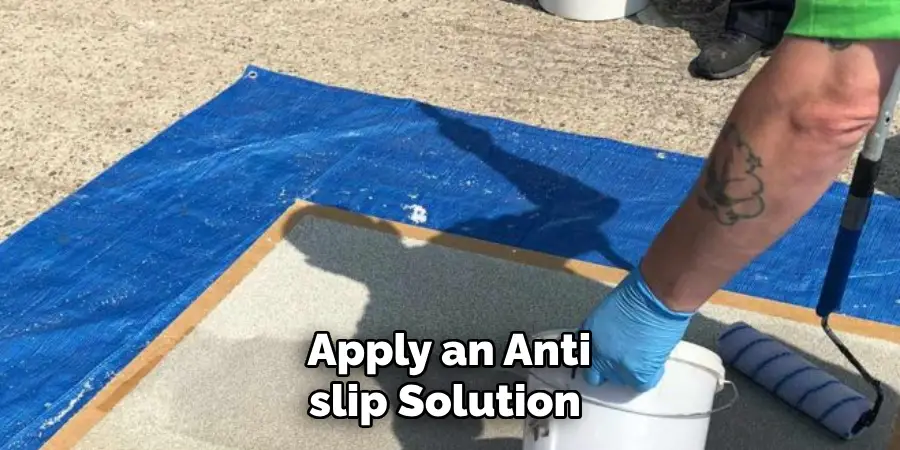
Step 5: Let it Sit
Allow the solution to sit for at least 10-15 minutes before proceeding to the next step. After the recommended time has passed, rinse the surface with clean water. This will remove any excess solution and leave behind a non-slip surface.
Step 6: Repeat if Necessary
If you still notice slippery conditions on your stamped concrete, repeat these steps until desired results are achieved.
By following these simple steps, you can ensure that your stamped concrete remains safe and slip-free for years to come.
Safety Tips for How to Make Stamped Concrete Not Slippery
- Choose a textured surface for your stamped concrete to create more grip and reduce the risk of slipping. This could include using coarse aggregates, rolled-in pebbles or shells, or even adding sand to the top layer of the concrete before it dries.
- Use a sealant specifically designed for stamped concrete that provides slip-resistance. These sealants often have additives such as polymer beads or glass particles to increase traction on the surface.
- Avoid using glossy sealants, which can make stamped concrete very slippery when wet. Instead, opt for a matte finish that still provides protection but has a more textured surface.
- Regularly clean and maintain your stamped concrete to prevent the build-up of dirt, debris, and other materials that can create a slippery surface. Use a mild detergent and water to clean the surface, and avoid using harsh chemicals that can damage the sealant.
- Consider using an anti-slip additive in your sealant for added protection against slipping. These additives are often made of fine particles such as sand or silica which create a rougher surface for better grip.
- Choose appropriate shoes when walking on stamped concrete to reduce the risk of slipping. Avoid high heels or shoes with smooth soles, and opt for shoes with good traction.
- In colder climates, be cautious when using de-icing agents on stamped concrete as they can make the surface slippery. Use sand instead to provide traction without damaging the sealant.
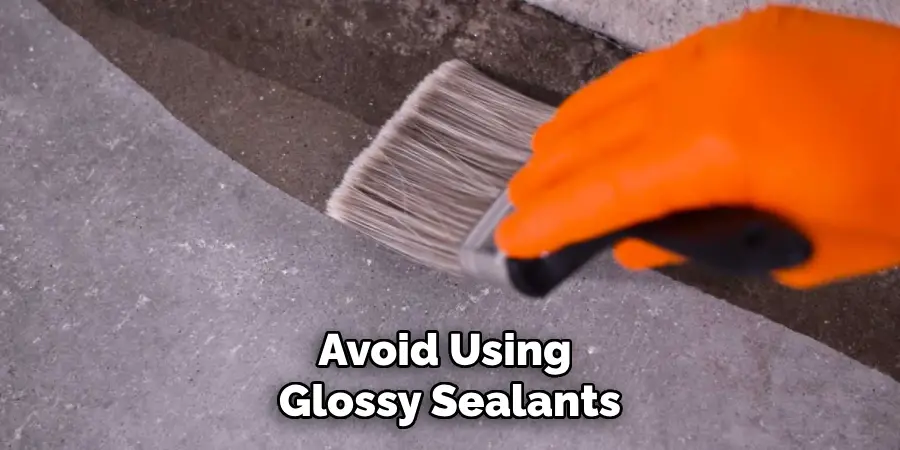
By following these safety tips, you can make your stamped concrete not only beautiful but also safe to walk on, even in wet conditions. Remember to regularly clean and maintain your stamped concrete to ensure its slip-resistance and longevity.
Are There Any Maintenance Tips That Can Help in Preventing Stamped Concrete From Becoming Slippery Over Time?
The frequency of maintenance for stamped concrete depends on several factors such as the amount of foot traffic, weather conditions, and type of sealer used. On average, stamped concrete should be maintained every 2-3 years to ensure it remains slip-resistant.
However, if you live in an area with harsh weather conditions or high foot traffic, more frequent maintenance may be necessary. It is always best to consult with a professional for specific recommendations based on your location and usage. There are several steps you can take to prevent stamped concrete from becoming slippery over time. These include:
1. Regular Cleaning
Dirt, debris, and algae can build upon the surface of stamped concrete, making it more slippery. Regularly cleaning the surface with a pressure washer or mild detergent can help prevent this buildup and keep your stamped concrete safe to walk on.
2. Applying a Non-Slip Sealant
When choosing a sealant for your stamped concrete, opt for one that has anti-slip properties. This will provide an extra layer of protection against slips and falls, especially in wet conditions.
3. Adding Grit to Sealant
Another way to increase the slip-resistance of stamped concrete is by adding grit or a non-skid additive to the sealant before applying it. This will create a rougher surface, making it harder for people to slip on.
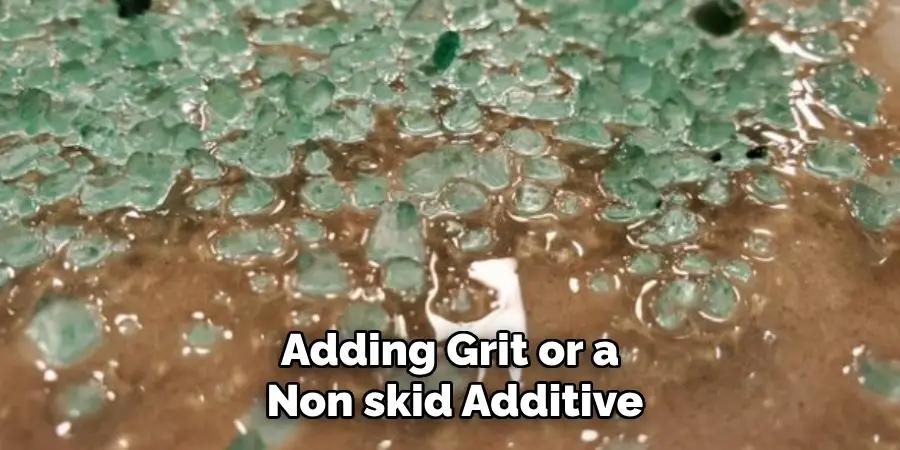
4. Avoid Using Chemical Deicers
If you live in an area that experiences freezing temperatures, it may be tempting to use deicing chemicals on your stamped concrete. However, these chemicals can break down the sealant and make the surface more slippery. Instead, opt for using sand or kitty litter to create traction on icy surfaces.
5. Regular Inspections
It is important to regularly inspect your stamped concrete for any cracks or uneven areas, as these can also contribute to slip hazards. If you notice any damages, be sure to repair them promptly to maintain a safe walking surface.
By following these maintenance tips and regularly assessing the condition of your stamped concrete, you can ensure that it remains slip-resistant for years to come. Remember, prevention is key when it comes to keeping your outdoor surfaces safe for yourself and others.
Is There Any Specific Cleaning Method That Can Help in Keeping Stamped Concrete Safe From Slipperiness?
Cleaning stamped concrete regularly is crucial to maintaining its slip-resistant properties. However, it is essential to use the right cleaning method to avoid damaging the surface. High-pressure washing can be effective in removing dirt and debris, but it can also damage the sealant if not used correctly. It is best to use a pressure washer with a low-pressure nozzle and keep it at least one foot away from the surface to avoid any potential damage.
Additionally, avoid using harsh cleaning chemicals as they can also break down the sealant and make the surface more slippery. Stick to mild detergents or natural cleaners such as vinegar and water solution for regular cleaning. By using a proper cleaning method, you can maintain the slip-resistance of your stamped concrete without compromising its appearance or structural integrity. Consult with a professional if you are unsure about the best cleaning method for your specific stamped concrete surface.
Are There Any DIY Methods for Reducing the Slipperiness of Stamped Concrete?
While sealers and coatings are the most common methods for making stamped concrete less slippery, there are a few DIY options that you can try as well. These methods may not be as effective or long-lasting as using sealers or coatings, but they can still help to improve traction on your stamped concrete surface.
One option is to roughen the surface of the stamped concrete by spraying it with a high-pressure power washer. This can help to create small indentations in the surface, providing more texture and grip for better traction. However, be careful not to use too much pressure as it can damage or remove the stamped pattern on the concrete.
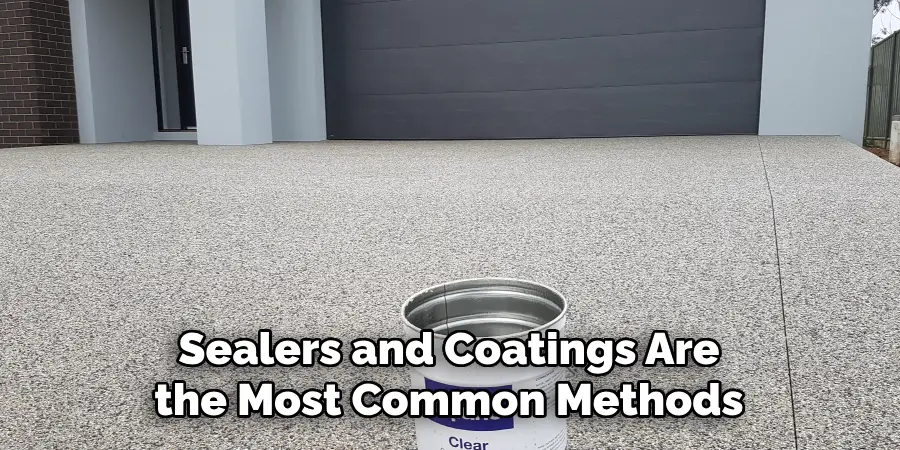
Another DIY solution is to mix an anti-skid additive into the sealer or coating before applying it to your stamped concrete surface. These additives are often made of small particles that create a rougher texture on the surface, providing better traction for foot traffic. Just be sure to follow the instructions carefully when using these additives to ensure proper application.
Conclusion
The main disadvantage of stamped concrete is that it can become slippery when wet. This can pose a risk of falls and injuries, especially in high-traffic areas or places with heavy foot traffic. Slippery stamped concrete can also be a concern for people with mobility issues or those using wheelchairs or strollers.
In conclusion, stamped concrete is a popular choice for outdoor surfaces due to its durability and aesthetic appeal. However, one major concern with this type of concrete is that it can become slippery when wet, posing a potential safety hazard. In this blog post, we have discussed several effective ways to make stamped concrete not slippery. I hope this article has been beneficial for learning how to make stamped concrete not slippery. Make Sure the precautionary measures are followed chronologically.
About
Outdoor Fixes is a distinguished figure in the world of Diy design, with a decade of expertise creating innovative and sustainable Diy solutions.
His professional focus lies in merging traditional craftsmanship with modern manufacturing techniques,
fostering designs that are both practical and environmentally conscious. As the author of diy,
outdoorfixes delves into the art and science of outdoorfixes-making, inspiring artisans and industry professionals alike.
Education RMIT University
(Melbourne, Australia) Associate Degree in Design (Outdoor Fixes) Focus on sustainable design, industry-driven projects,
and practical craftsmanship. Gained hands-on experience with traditional and digital manufacturing tools, such as CAD and CNC software.
Nottingham Trent University
(United Kingdom) Bachelor’s in outdoorfixes.com and Product Design (Honors) Specialized in product design with a focus on blending creativity with production
techniques. Participated in industry projects, working with companies like John Lewis and Vitsoe to gain real-world insights.
Publications and Impact
In diy, Outdoor Fixes his insights on indoor design processes, materials, and strategies for efficient production.
His writing bridges the gap between artisan knowledge and modern industry needs, making it a must-read for both budding designers and seasoned professionals.

